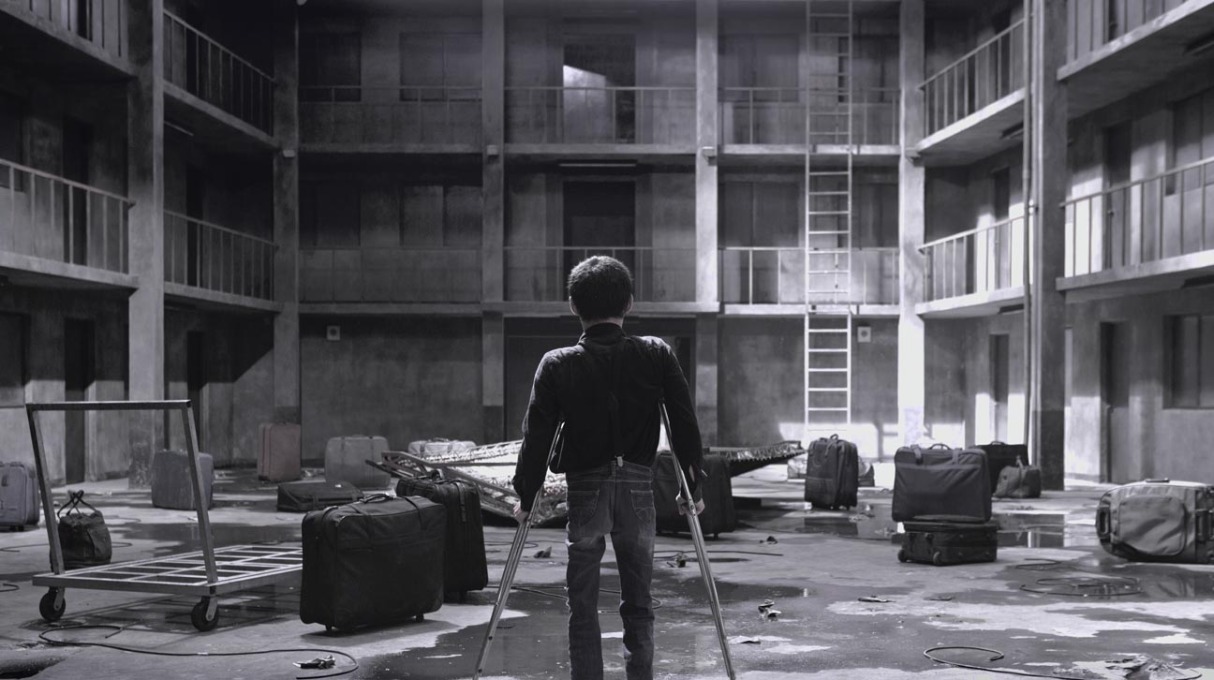Chen Chieh-jen’s affecting exhibition “Happiness Building”, on view at Hong Kong’s Hanart Square to 28 February 2013, was about many things, but at its heart, it was a meditation on the ways in which lives break down and, sometimes, are pieced back together again. The film which was the main element of the exhibition offered a challenging, poignant reminder that happiness is a living thing always in flux, as easily broken down as assembled. In the film, personal stories told by unrelated characters, confront the viewer with the vulnerability of this sentiment, a state of being that may be long-nurtured but can suddenly be devastated by a single catastrophic event. It is from here, in a place of almost existential reflection following such events that the individuals in “Happiness Building” find themselves attempting to reconcile the past.
But the “building” of the title is a noun as well as a verb, describing space as well as process. So the stories are told against the backdrop of a decaying industrial building, in which objects imbued with meaning for the individual characters are on full display. In this space, each character is neither speaking to one another, nor to the camera, but appear more akin to lonely ghosts haunting shared rooms and hallways, without perceiving the other occupants. Rather than keeping the viewer at a distance, this arrangement draws us in, providing a discomforting level of access to the inner monologues stuck on repeat, running from the past but never quite escaping it.
For the stories that the characters in the film tell, revolve around ideas of shame and blame, failure and identity. In one sequence, a young woman describes her father’s struggles after losing his job and his ultimate suicide. As relatives deal with the aftermath, they discover the father had destroyed all forms of official identification before killing himself. In response, the daughter tells us, she legally changed her own names, both given and family.
In the exhibition, the 84-minute film was placed on a crisp if austere display, surrounded by related words and images. These supporting materials helped contextualize for the visitor what lay ahead, but in similar ways to a lengthy essay prefacing a new imprint of a classic novel, were best gleaned for guidance rather than overly impacting on the experience of the work itself. Included were impressive photographic stills taken from the set, with a painterly layering of grays: still-lifes only suggesting at the memories shared by the occupants of the spaces they depict.
In the end, “Happiness Building” (or perhaps simply happiness building) was not therapeutic – not about moving on so much as laying memories to rest. In the film we see this most movingly in moments such as when a woman drapes a white cloth across the chasm of a broken bed. Later, she carries plastic bags, in reference to those full of clothes, once carried by her escaping mother, to a room filled with piles of debris. There the bags are settled, buried, absorbed into the plies, which are suddenly transformed; these heaps are not waste, but rather the remnants of memories from others, already abandoned.
Happiness Building
18 December 2012 - 28 February 2013
Hanart Square Gallery
Chen Chieh Jen 《 Happiness Building I 》Scene from JEN KAI CHANG on Vimeo.





